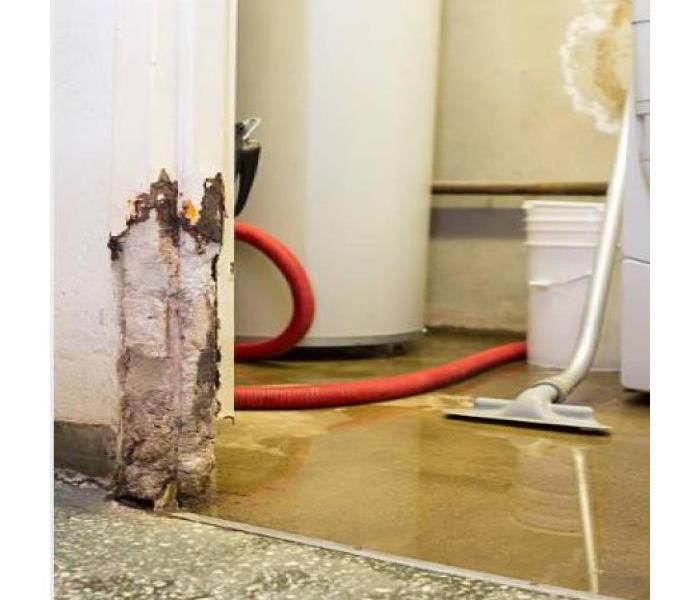When to Replace Your Hot Water Heater In West Riverside City
1/14/2019 (Permalink)
If your water heater is leaking or not heating up, you may be able to repair it rather than replace it. Regular maintenance will extend the life of your water heater. Some repairs, such as replacing a pressure-relief valve or heating element are pretty simple. Follow our tips to troubleshoot your gas or electric water heater issues and learn how long a water heater should last.
Safety First
Some water heater repairs are simple. However, if you aren't comfortable working with gas or electricity, always call a professional.
Repair or Replace
Based on the manufacturer's suggested service life, the life expectancy of a water heater is about 8 to 12 years. That varies with the location and design of the unit, quality of installation, maintenance schedule and water quality.
If your water heater is more than 10 years old, leaks around the base of the tank, and / or works erratically or not at all, it's probably time for replacement. However, before you begin the replacement process, make sure that an electrical problem, such as a blown fuse or tripped breaker, is not the reason for the unit's failure.
Troubleshooting Common Issues
Perhaps the most common problem connected with a water heater is water that isn't as hot as you want it to be. This is usually caused by a faulty thermostat or a defective heating element. Check the following when your water is not hot enough:
Electric water heater
Gas water heater
Other common problems and possible solutions
Water Heater Maintenance
Today’s water heaters are manufactured to require little or no maintenance, but these maintenance tips could prolong the life of your water heater:
When Replacement Is Necessary
If you're replacing a water heater, you can replace it with the same type of unit. However, upgrade possibilities should be considered. For example, you may choose to increase or decrease the unit's holding capacity to accommodate a changing family. Or, you may opt to go tankless.
When looking for a water heater, consider these features:
Before making repairs or purchasing a new water heater, check the nameplate on the side of your current unit. Here you will find helpful information including the tank capacity, insulation R-value, installation guidelines, working pressure, model and serial number. If you have an electric water heater, the nameplate will also list the wattage capacity and voltage of the heating elements.
Caution
If you intend to convert from electric to gas or vice-versa, or if you don't feel comfortable doing the repair or maintenance work, hire a professional.
Caution
Make sure your home is equipped with carbon monoxide detectors when gas-powered appliances are present.






 24/7 Emergency Service
24/7 Emergency Service
